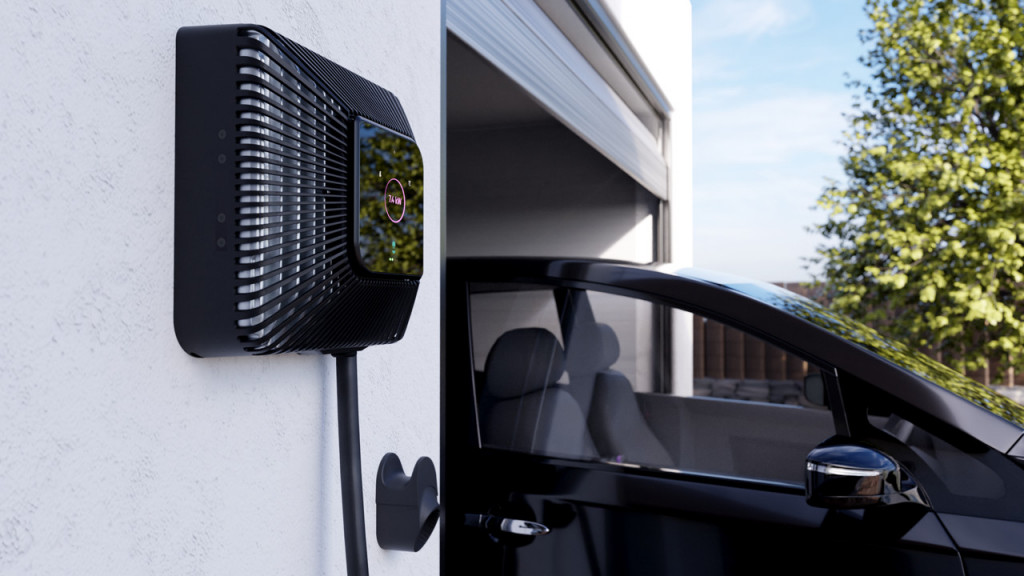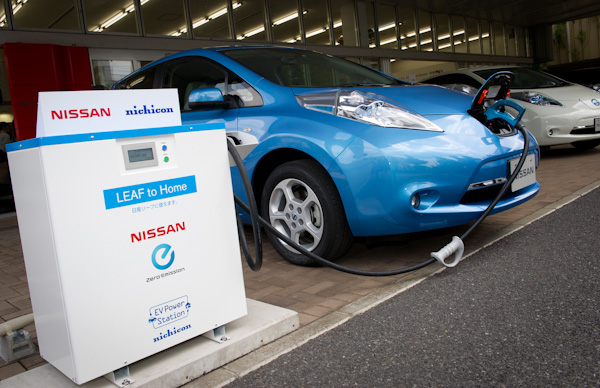In the wake of Japan’s 2011 earthquakes, Nissan was particularly proud of the ability set its new Leaf electric car was given from the start, and how it could be utilized—to keep the lights on in an office building for a short time, or power a home for a full day, or even aid traffic lights in a pinch.
The Leaf’s capability to fill in as needed as a mobile backup power source, or as part of a smart home system to potentially ease the load on the grid or lower your charging bills in the future, has been a built-in strength. And it’s hard to believe that nearly a decade after the Nissan Leaf was launched, one of the its best value-added cards still hasn’t been played for the U.S.
If Nissan won’t step up in the U.S., another company will. By the end of the year, there should at last be an entry in the U.S. capable of taking advantage of the Leaf’s potential as an energy device for vehicle-to-grid (V2G) schemes. The Quasar will cost about $4,000—possibly subsidized to less by utility partnerships—and made its premiere for the U.S. at CES in January.
It will be available here later in 2020, according to Wallbox, but it will only be initially usable by those who have a vehicle with native CHAdeMO DC fast charging, like the Nissan Leaf

Wallbox Quasar, for bi-directional DC charging
The Leaf and most other CHAdeMO vehicles are capable of bi-directional charging “out of the box.” It’s just not a capability that Nissan has ever taken advantage of for home customers in the U.S.
“For a normal home setup with a grid-tied Quasar, you don’t need any special hardware as the vehicles are already enabled for bidirectional charging, and if you are in a utility territory where you can send energy back onto the grid, you would observe all permits for interconnection to the grid,” said Doug Alfaro, Wallbox general manager for North America.
Alfaro added that if you’re just looking to use the Quasar for home backup during an outage, then you might need additional safety hardware like a utility disconnect, as you might also need for a battery storage system.
Tesla still doesn’t have anything like the Quasar either. And a device like it might potentially chip into its Powerwall sales because it effectively uses the car as one.
Wallbox didn’t directly answer if they’re considering Tesla compatibility, but Alfaro did tell us that it’s “aligning with automakers on when they will make commercially viable vehicles capable of bidirectional charging using CCS.”
Simply put, they’re not out yet. Automakers such as Audi have told Green Car Reports that while the E-Tron was designed for bi-directional charging, slow progress on bi-directional standards mean that it wasn’t technically ready for it at launch—and it wasn’t their fault (Google ISO 15118 if you dare and get lost in engineering-standards meetings).

Nissan Leaf To Home System
Quasar will also be compatible with the CCS standard soon. The CHAdeMO fast-charging system, on the other hand, was ready for this long ago; the standard has boasted a high level of interoperability and backwards-compatibility from the start.
The Leaf was given the green light for home and grid uses in Japan very early on, and it’s been globally certified for V2X uses like bidirectional charging and grid connection by international (IEC) standards since late 2014.
Nissan launched its Leaf to Home power system back in 2012 in Japan, and it’s been launched and tested for some other markets since then. It’s even something the U.S. Department of Defense researched as part of a trial in 2013, after 2012’s Superstorm Sandy.
There’s been progress more recently. In Germany, for instance, it was approved as a vehicle to grid (V2G) device in that otherwise tightly regulated country in 2018.
![2015 Nissan Leaf with CHAdeMO fast-charging cable plugged in [photo John Briggs] 2015 Nissan Leaf with CHAdeMO fast-charging cable plugged in [photo John Briggs]](https://images.hgmsites.net/lrg/2015-nissan-leaf-with-chademo-fast-charging-cable-plugged-in-photo-john-briggs_100558582_l.jpg)
2015 Nissan Leaf with CHAdeMO fast-charging cable plugged in [photo John Briggs]
While there have been a number of vehicle-to-grid charging tests in the U.S. involving the Leaf, no product or service so far has allowed EV owners to easily exploit that capability. Nissan meanwhile has teased that potential at many presentations, suggesting nearly every year that it’s on the way the following year.
That said, the automaker sounds somewhat welcoming of the possibility.
“Nissan supports products and initiatives like this that drive EV adoption in North America and around the globe,” said spokesman Jeff Wandell to Green Car Reports. The company couldn’t yet comment on how it might handle such aftermarket products like the Quasar as it relates to vehicle warranties.
The unit will be able to provide an output power of up to 7.4 kw—either to the car or back to a home or grid setup—and it’s configurable from 6 amps to 32 amps. It’s a fully connected device, with wifi, ethernet, Bluetooth, and a cellular connection, and it had an RFID transceiver, facial recognition, and gesture recognition. It’s also UL-listed.
